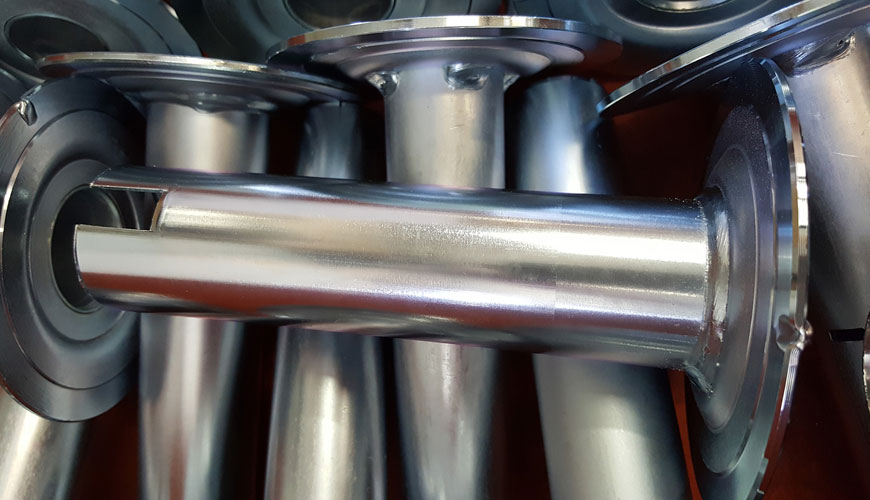

EUROLAB, with its state-of-the-art accredited laboratories and expert team, provides precise and fast testing services within the scope of EN 12329 testing. This European Standard specifies requirements for electrodeposited zinc coatings on additionally treated iron or steel. This European Standard does not specify chromate coatings that are only necessary to improve the adhesion of paints or varnishes.

Electrodeposited zinc coatings can be chromate treated to retard the formation of corrosion products on the surfaces of coatings exposed to corrosive atmospheres. When corrosion protection is the main purpose of the coating, the usual practice is to apply a chromate or other conversion coating on top of the electro-precipitated zinc coating. This is particularly effective in retarding the formation of white corrosion products that form on zinc coatings under certain conditions.
Any heat treatment to remove hydrogen embrittlement should be done before a chromate conversion coating is applied. Heat treatment should be done as soon as possible after coating and in any case within 4 hours.
Chromating solutions are generally acidic and contain hexavalent chromium salts with other salts that can be modified to affect the appearance and hardness of the film. Clear, bleached, iridescent, olive green and black films can be obtained on zinc coating by treatment in suitable solutions. Transparent films can also be obtained by bleaching iridescent films in alkaline solutions or phosphoric acid.
For better protection against corrosion, chromate conversion coatings can be post-treated with sealants, adding organic products to the chromate film. This process also increases the resistance of the chromate conversion coating to higher temperatures.
If hot water is used as the final rinse after chromating, the rinse time should be kept as short as possible to prevent the hexavalent chromium from dissolving. Drying of the article should be done at a temperature appropriate for the type of chromating used to prevent cracking due to drying of the chromate coating.
EUROLAB assists manufacturers with EN 12329 test compliance. Our test experts, with their professional working mission and principles, provide you, our manufacturers and suppliers, the best service and controlled testing process in our laboratories. Thanks to these services, businesses receive more effective, high-performance and quality testing services and provide safe, fast and uninterrupted service to their customers.
To get an appointment, to get more detailed information or to request an evaluation, you can ask us to fill in our form and reach you.